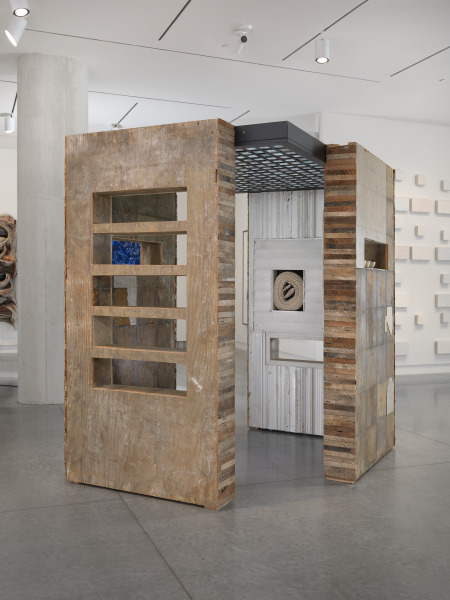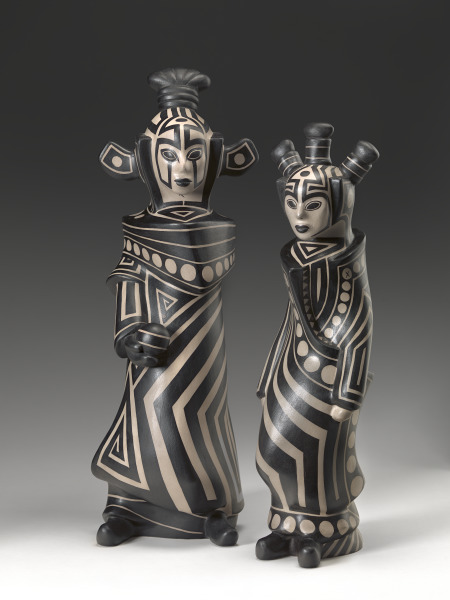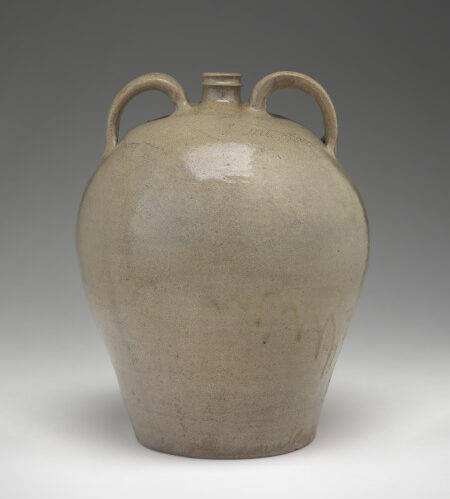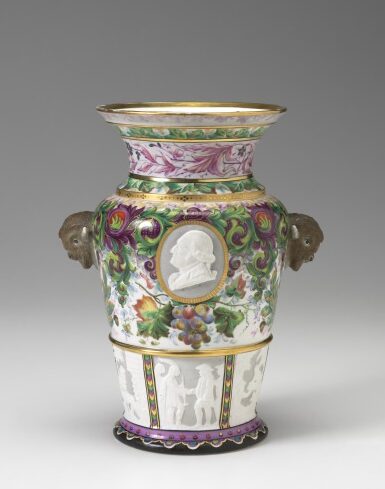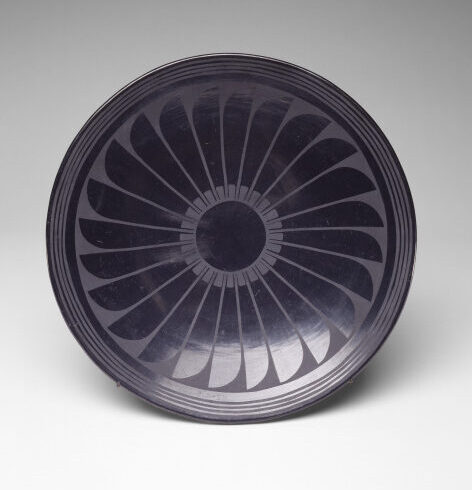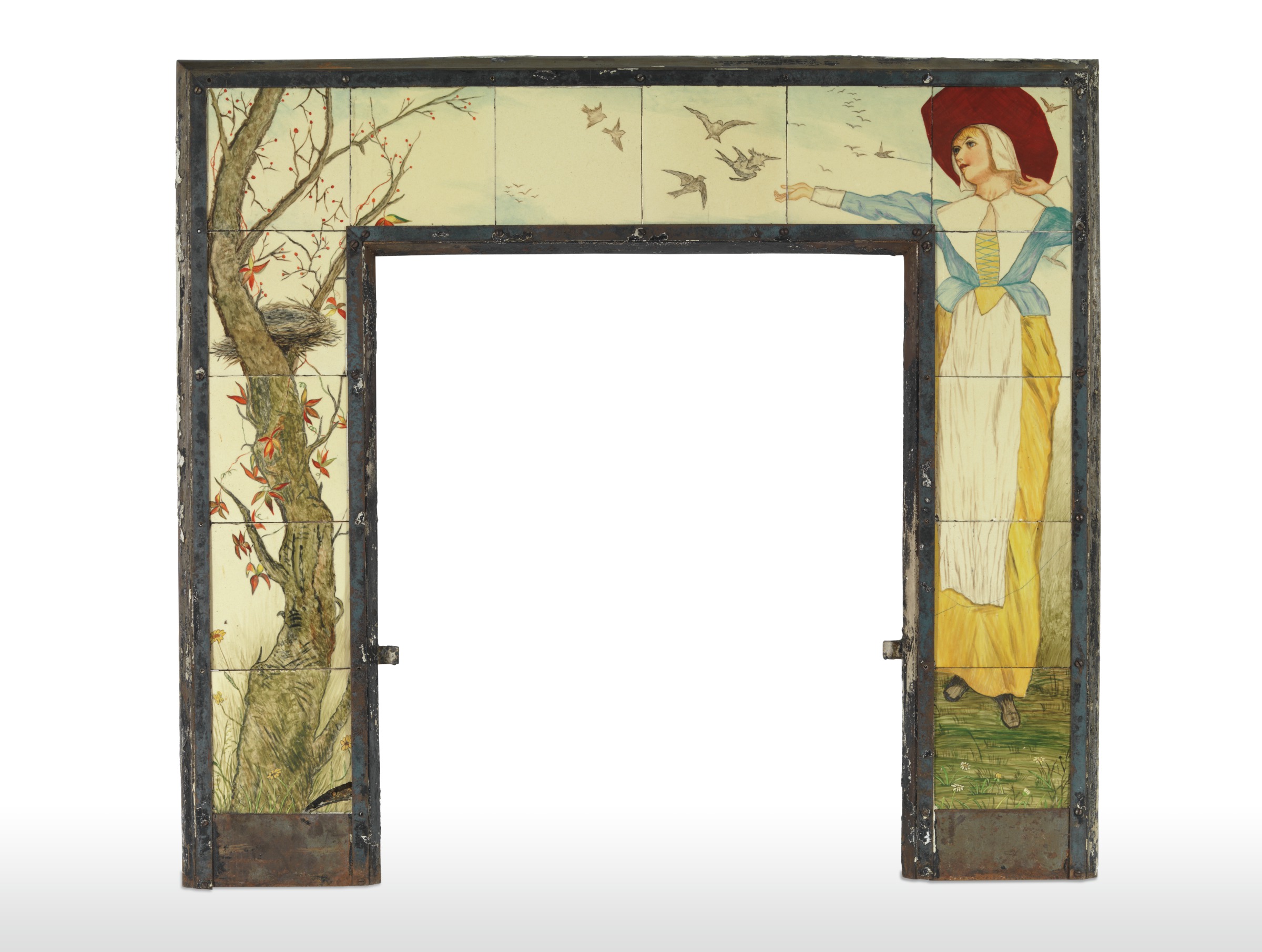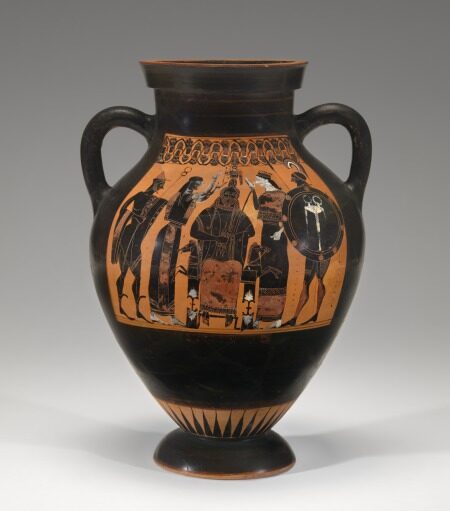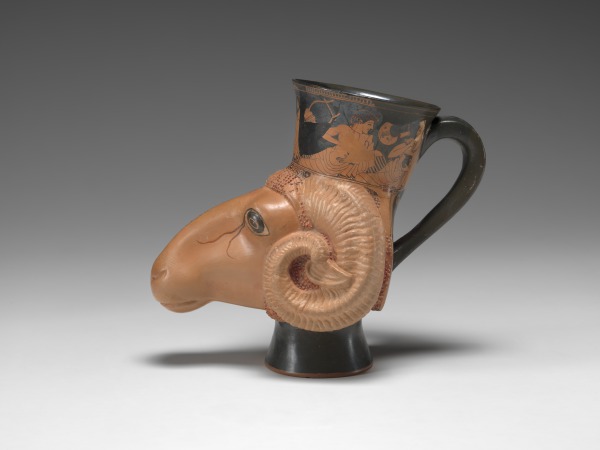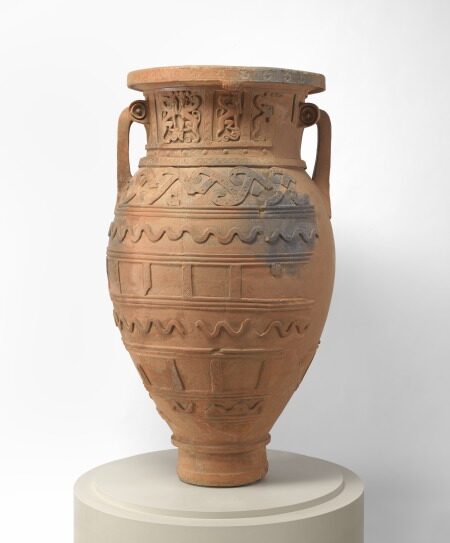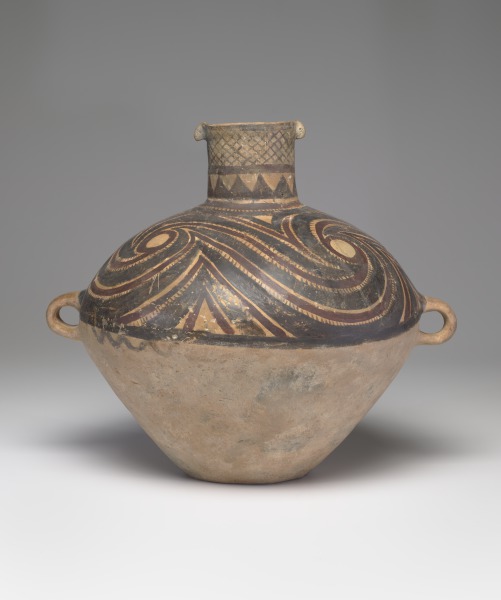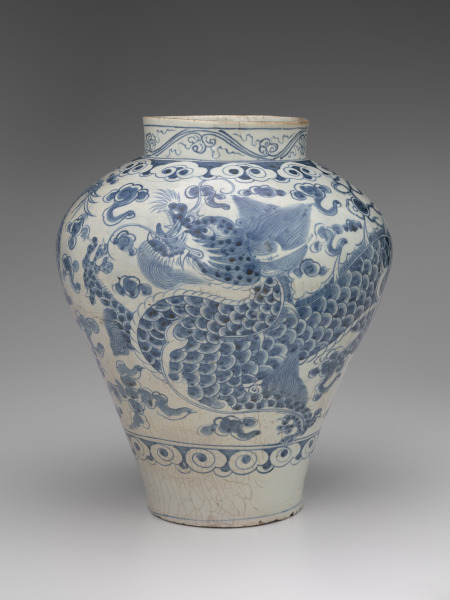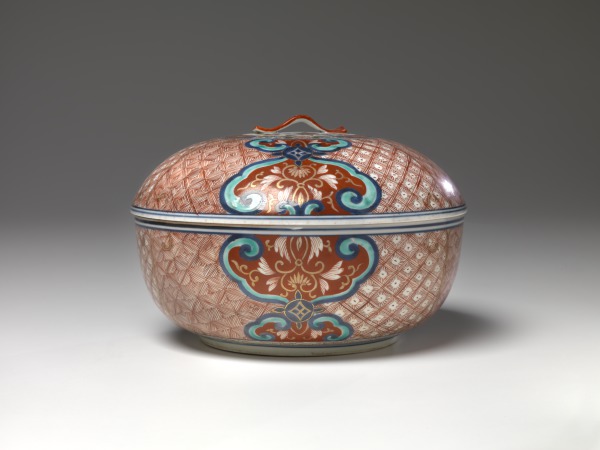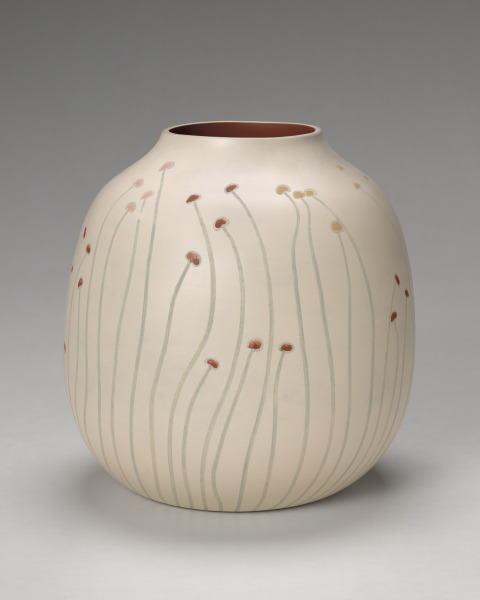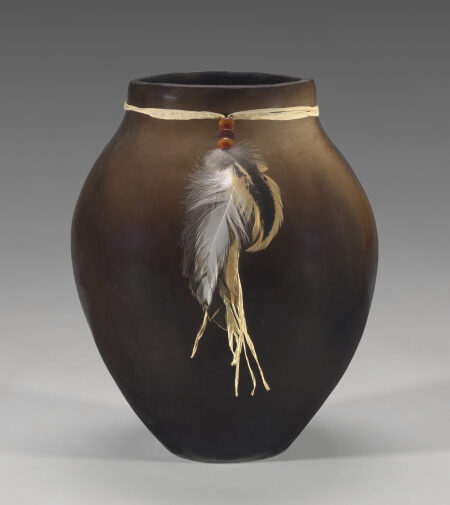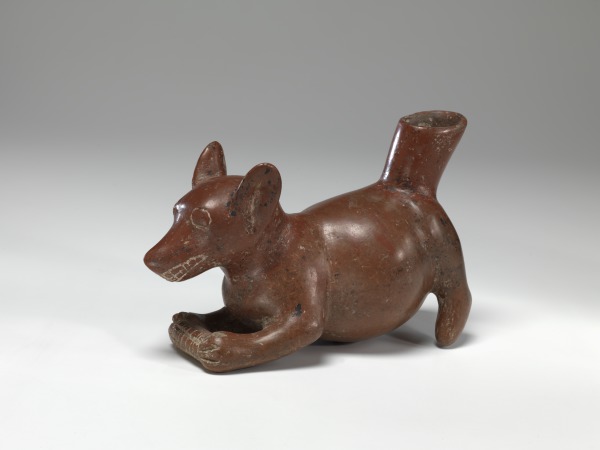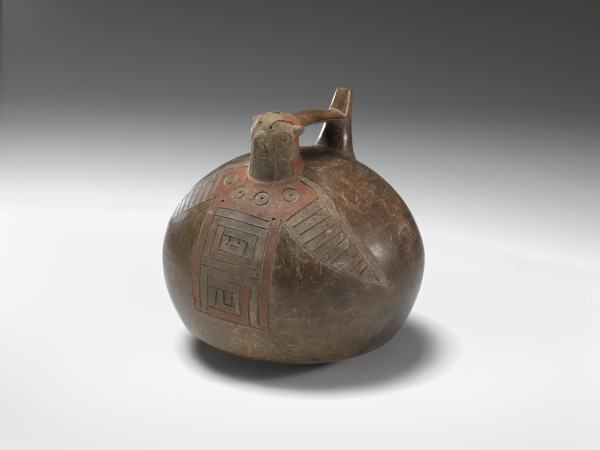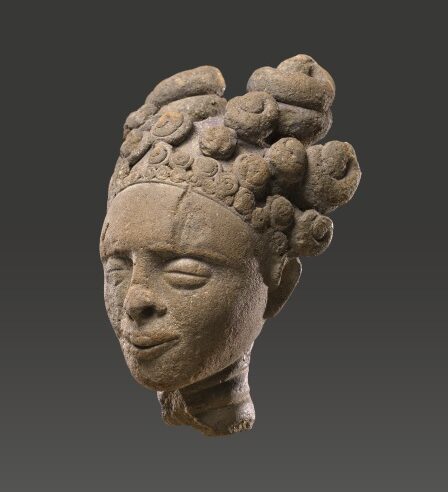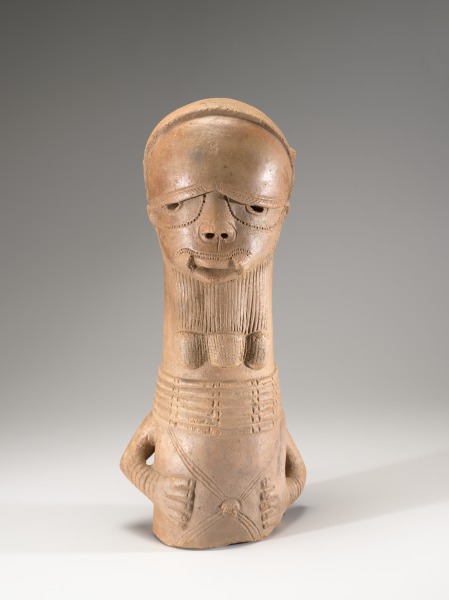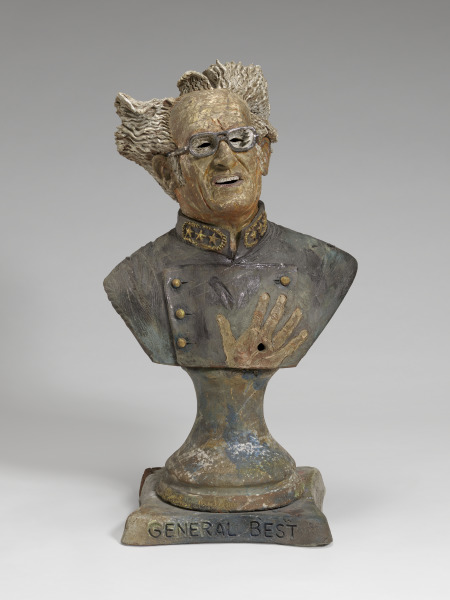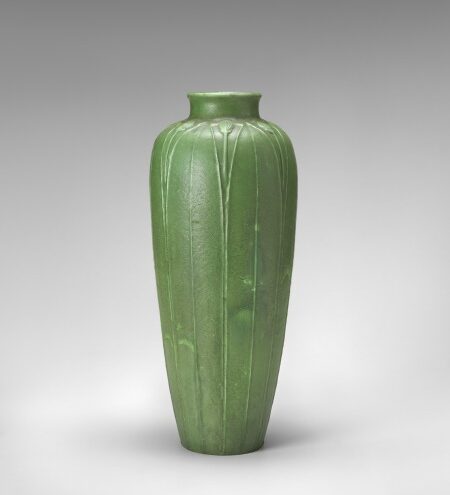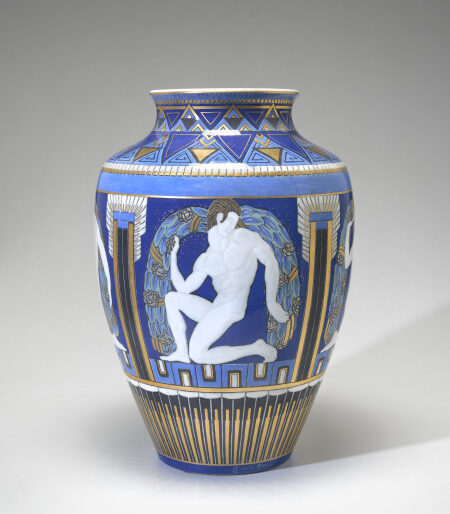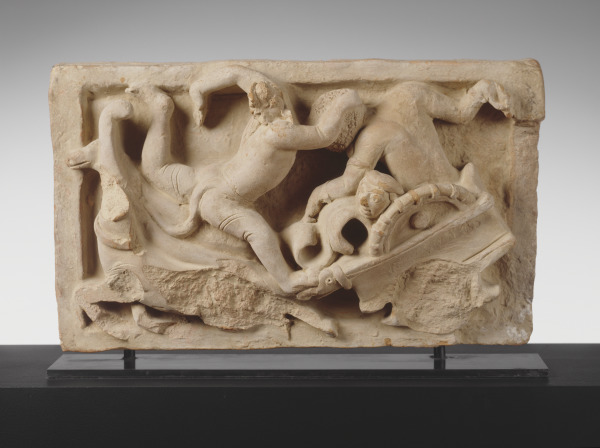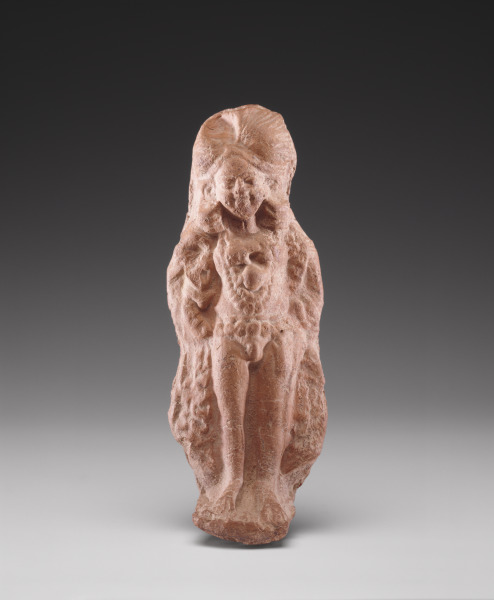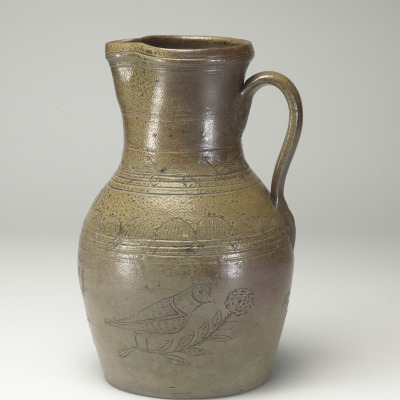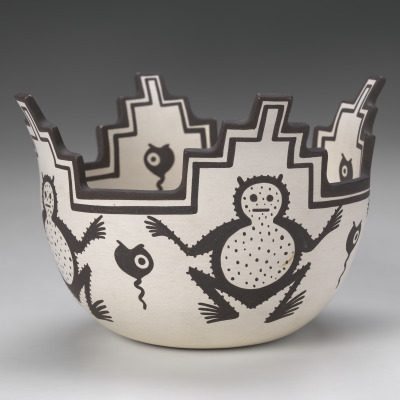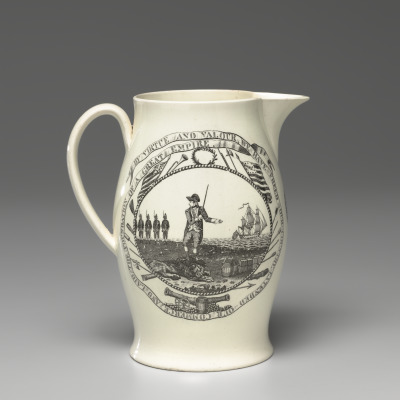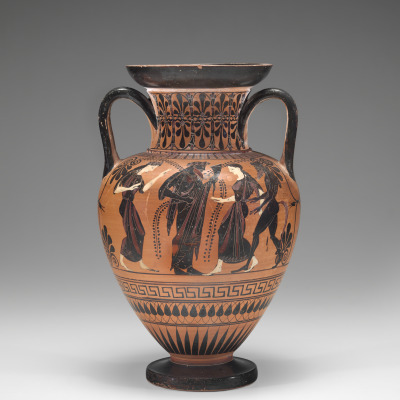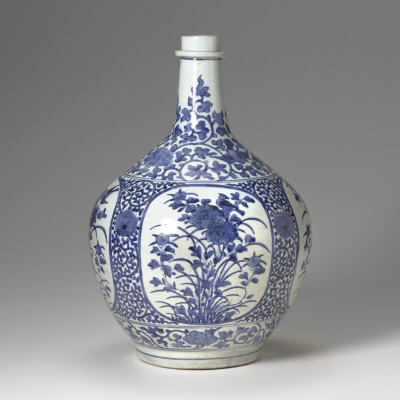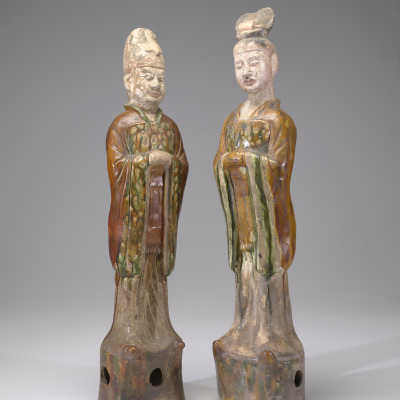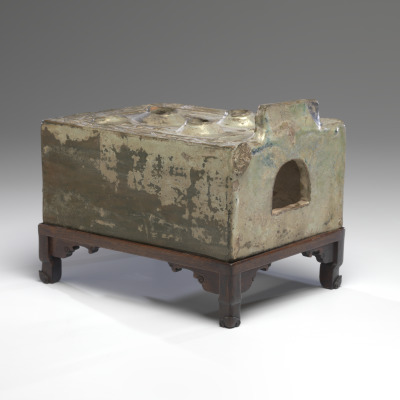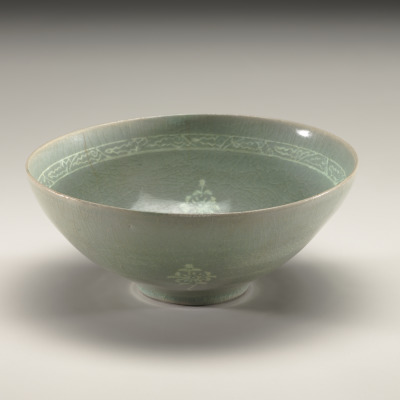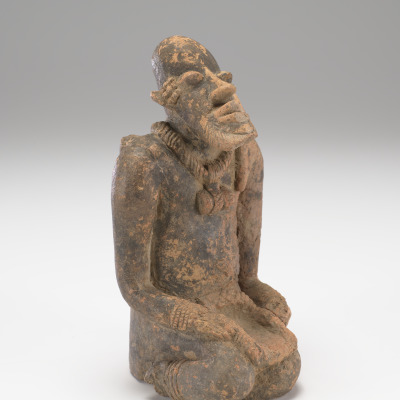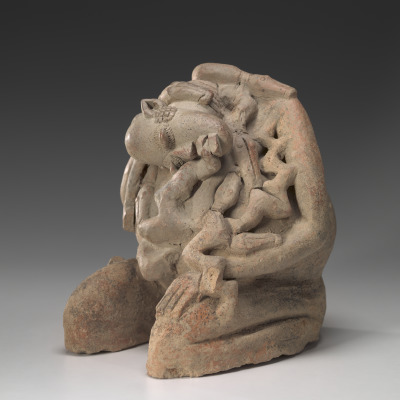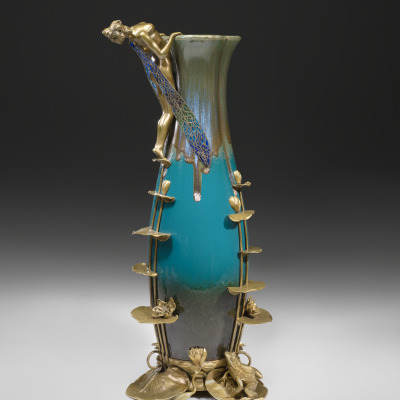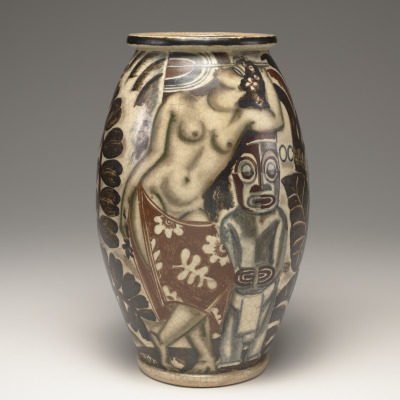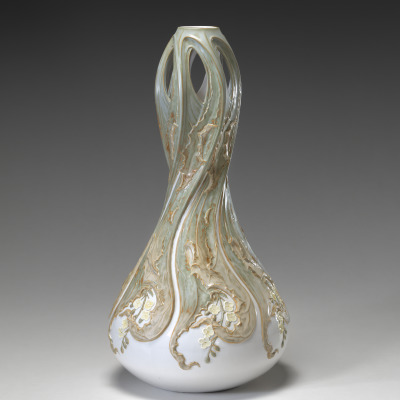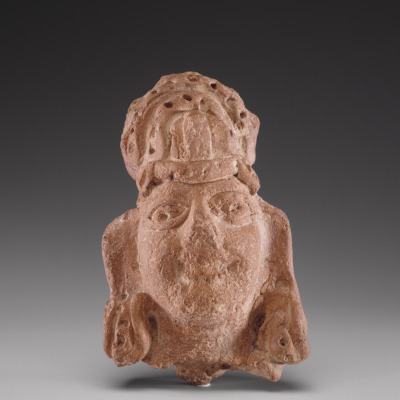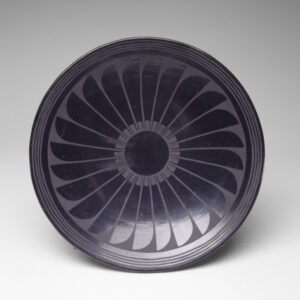
Ceramics at VMFA
Discover highlights of VMFA's collection of ceramics!
“[as a potter] you very quickly learn how to make great things out of nothing. I feel like as a potter you also start to learn how to shape the world.” -Theaster Gates
Ceramic objects, or works made from clay, adorn nearly every corner of the museum, ranging from ancient vessels to large–scale, abstract, contemporary sculptures. In VMFA’s galleries you will discover intricately inscribed vessels, inventive glazing techniques, sculptures crafted for religious ceremonies or objects that once served as ornate home decor. Regardless of their purpose or intention, these ceramic works stand as enduring symbols of cultural richness across the globe. Enjoy the diverse array of objects, each telling a unique story and highlighting the timeless allure of clay.
This guide is inspired by the special exhibition Theaster Gates: Wonder Working Power which features ceramic works by Theaster Gates, a Chicago-based multidisciplinary artist and professor dedicated to community transformation. The exhibition is currently on view in the Lewis Focus Galleries, on Level 2, through June 30, 2024. Learn more on the exhibition page.
Level 2
Glass Lantern Slide Pavilion, Theaster Gates
21st Century Art Galleries
Considered a “social practice” artist, Gates culls his artistic materials from crucial aspects of his larger enterprise, Rebuild Foundation, whose stated mission is to “transform under-resourced communities.” For nearly a decade, Gates has been renovating properties on South Dorchester Avenue on Chicago’s Southside, where he lives and works. Using reclaimed materials, he has built a complex of residences interspersed with community spaces. In turn, he repurposes materials from these renovations to make art objects, the sale of which fund further renovations forming a circular system Gates calls “an economy of opportunity.”
Here salvaged wood from buildings in Dorchester form walls where Gates has embedded the rolled form of a fire hose—a historical reference to the hoses used against protestors during the civil rights movement and to America’s racist housing policies of the past. Four found teacups allude to Gates’s fascination with ceramics as a central theme of transformation. A potter by training, Gates has described pottery as “the magic of taking the lowliest material on earth— mud—and turning it into something beautiful and useful.” Likewise, the placement above of art-history slides suggests a literal reading of “high and low” culture, further highlighting his choice to utilize rough, humble materials as the foundation of his practice.
Aeronauts: Steu and Cuda, Virgil Ortiz
American Art Galleries
Cochiti potters of the 19th century created large-scale, boldly graphic ceramic figures called monos as a form of social commentary. (The word monos is a colloquial blend of Spanish and Keres with inexact definitions that range from “mimic” to “monkey”.) Virgil Ortiz seeks to recapture the essence of these late-19th century works and demonstrate that these ceramic traditions are still alive today.
Steu and Cuda are from Ortiz’s series Pueblo Revolt 1680/2180, a collection of monos figures that engages young people in the factual history of the Pueblo Revolt through a science fiction, futuristic narrative. Androgynous twins Steu and Cuda are interstellar time travelers who visit the Pueblo of the ancient past, leaving the mesas as remnants of their presence. The pair are complementary opposites in their angular forms and designs. They are in keeping with Cochiti tradition of large-scale, boldly graphic, ceramic figures to make social commentary. Likewise, the discordant patterns and repeated geometrics are similar to earlier Pueblo ceramics, serving to both bind and separate the figures.
Doubled-handled Jug, David Drake
American Art Galleries
One of only twenty-nine identified, signed, and dated poem wares by enslaved potter David Drake, this jug evidences Drake’s ability to read and write. Although a few slaves were taught to read in the early decades of the 19th century, the practice increasingly became illegal in the period preceding the Civil War. Drake’s overt use of writing—and his owner’s acceptance of it—was a defiant gesture that proclaimed his identity during an era when his individual status was not acknowledged.
Centennial Vase, Karl L. H. Müller
American Art Galleries
One of the most iconic of American porcelain forms, this vase belongs to a small group of objects produced to the design of German-born sculptor Karl L. H. Müller by the Brooklyn based firm Union Porcelain Works. First unveiled in monumental scale at the 1876 Centennial International Exhibition, held in Philadelphia, the vases were intended as a visual record of America’s progress through its first century of independence. Boasting two portrait medallions of George Washington and handles modeled on North American bison heads, each vase features a series of six biscuit-relief plaques depicting key figures and themes in American history. A benchmark of technical virtuosity and artistic merit, this vase boasts superb enamel work in a complex pattern of oak leaves and acorns among berried branches and grapevines. Adding to the quality of its execution is the rare artist’s mark—only one other such example is known—suggesting it may have been produced by Müller himself.
Platter, Maria Martinez and Julian Martinez
American Art Galleries
Maria and Julian Martinez, Tewa Indians of San Ildefonso Pueblo, are among the most widely recognized 20th-century American potters. Inspired by archaeologists, Maria led a revival of prehistoric pottery styles among Pueblo artisans. After establishing a national reputation at the 1904 St. Louis World’s Fair, she began collaborating with her husband, Julian. From 1919 to 1943, Maria shaped the pots and Julian painted the designs. They fired them using a specialized technique that produced a distinctive black finish, often part matte, part lustrous.
For this bold platter, Julian used one of their favorite motifs, a puname eagle-feather design adapted from the thousand-year-old Mimbres style pottery.
After Julian’s death in 1943, Maria made pottery with other family members, including daughter-in-law Santana Roybal Martinez; one of their elegant bowls, with a solid lustrous glaze, is also on view. Today, a new generation of the Martinez family continues the tradition of crafting the highly prize blackware.
Tile Fireplace Surround, Edwin Austin Abbey
American Art Galleries
This rare surviving example of a popular late-19th-century applied art form exemplifies the cultural spirit and varied production of American Aestheticism. The work of American painter, illustrator, and muralist Edwin Austin Abbey, this fireplace surround was executed under the auspices of the Tile Club, a fraternal association of multitalented New York art professionals.
Little documented information on the early history of Abbey’s fireplace surround exists, but it may have been installed in the artist’s former New York studio, which served as the Tile Club’s headquarters from 1881 to 1887. The surround later appeared in a Victorian home in Astoria (Queens), New York. It was removed from the house, which was slated for demolition, by a local antiques dealer in the 1990s. It resurfaced on the market a decade later.
Black-figured Amphora
Ancient Art Galleries
The goddess Athena was miraculously born out of the head of Zeus, king of the gods. In the 7th century, the poet Hesiod wrote that Zeus swallowed his first consort, Metis, wisest of gods and men, because of a prophecy that she could bear a son who would overthrow him. Metis was already pregnant with Athena, who sprang fully grown and armed from Zeus’s head. In many versions of the story, Zeus’s headache is so severe that he asks the blacksmith god Hephaistos to split his skull open with an ax.
Red-figure Ram's Head
Ancient Art Galleries
The master potter Charinos specialized in animal- and human-headed vases. The form of this vessel, a rhyton, derives from Near Eastern drinking cups made of animal horns. Around the bowl are reclining participants in a symposium, one of whom is labeled Kekrops, legendary king of Athens, and the other Theseus, the Athenian hero who slew the Minotaur. The names of the other three banqueters cannot be read, but the one playing the lyre may be a bard.
Relief Pithos
Ancient Art Galleries
The triangular faces of the sphinxes and their wig-like hair with horizontal divisions are characteristic features of Daedalic art, the style of the earliest monumental sculptures of Greek art were created. At this time, Greek artists were increasingly aware of both the iconographic (e.g., the sphinxes) and technical conventions (the use of moulds and dies) of Near Eastern and Egyptian art. The alternating knobs and rosettes at the base of the neck, and the rosettes stamped on the lip and vertical bands on the body recall motifs on late Assyrian reliefs.
Jar with Lug Handles and Wave Design
East Asian Art Galleries
Shaped by hand, this painted red-clay jar represents one of the earliest painted ceramics produced on the upper bank of the Yellow River, in Gansu province in northwestern China. Used as a storage vessel for holding grains or water, this jar bears painted designs of waves and spirals, reflecting the life of local people and their close association with water and fishing.
Dragon Jar
East Asian Art Galleries
This jar is painted with two dragons-symbols of authority and imperial power-that meet in the middle as they fly among the clouds. The vigorous images and free brushwork reveal it as the work of a court painter.
In the 1700s, Korean official kilns were built near the capital in today’s Seoul to produce white and blue-and-white ceramics. Jars like this one were used at royal ceremonies for holding wine and flowers.
Covered Food Container with Flower Design
East Asian Art Galleries
Arita became a porcelain ceramic center in the 17th century, and from the nearby port of Imari, its products, known also Imari ware, were shipped around the world. The intricate design and form of this vessel would have been challenging for a potter. The floral panels against a background of textile patterns were skillfully matched with the design on the lid, and even the mark of the reign of the Chinese emperor Wanli (1573-1620) was faithfully copied on the base.
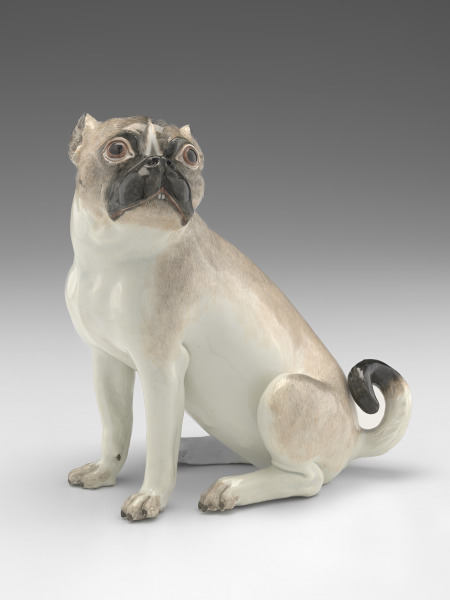
Large Female Pug, ca. 1741, Meissen Porcelain Manufactory (German, active from 1710), porcelain. Virginia Museum of Fine Arts, purchased with funds provided by Lynne and Robert Glasser, 2022.136
Large Female Pug, Meissen Porcelain Manufactory
European, Saunders Collection
A small breed of dog originating in Asia, the pug was first imported to Europe by the East India Company in the early 1700s. Because of their rather novel appearance and character, pugs were associated with a spectrum of character traits, including wittiness, liveliness, and high-spiritedness, as well as loyalty, lovingness, and fidelity. They quickly became the most fashionable dogs of the European courts.
Johann Joachim Kandler, the main designer and modeler of the Meissen manufactory at the time this sculpture was made, designed several large sculptures of virtually life-size pugs in a variety of positions. In Bavaria and Saxony, the popularity of these endearing little dogs even became the catalyst for the creation of the Order of the Pug, an ironic take on the kinds of Masonic and quasi-Masonic “secret” societies that were becoming widespread in Europe-only with an amusing twist. This sculpture was very likely made by Meissen at the request of a member of that humoristic chivalric order.
Jar with Floral Design, Camille Bernal
Evans Court Gallery, Native American Art
Both the design and materials of this jar by Camille Bernal pay homage to New Mexico, particularly the Taos Peublo area where the artist grew up. Twenty-four layers of white slip, polished to a matte finish, create a luminous surface on which to paint graceful abstract flowers. The delicate blossoms are a call for rain, so crucial to life in the arid region. The red micaceous paint on the inside and on some of the flowers is a remembrance of earlier Taos potters, who were known for their own micaceous pottery.
Large Pot, Christine Custalow
Evans Court Gallery, Native American Art
Christine Custalow is descended from both Rappahannock and Mattaponi peoples. She learned pottery making from her mother and continues to create works with the same traditional methods. Her low-fire “baking” process results in rich, luminous surfaces with organic tonal variation. Custalow uses the pinch-pot building process for smaller vessels and the coil method for larger ones. Most of her pots are burnished to a high shine using a smooth rock or a small piece of deer antler as a polishing tool. Custalow also employs other methods of surface embellishment. This example uses decorative elements such as feathers and beads attached to the vessel after it has been fully fired.
Dog with a Corncob
Evans Court Gallery, Pre-Columbian Art
Highly naturalistic and frequently amusing animals are common subjects in West Mexican ceramics. Close inspection, however, suggests that such innocent depictions are symbolically complex: the distinctly human manner in which this dog grips the corncob suggests that the figure may in fact be a shaman transformed into a dog. Among the few domesticated animals in the New World, dogs were common companions of warriors in battle. In addition, many Pre-Columbian cultures believed that dogs guided the dead through the underworld in the afterlife.
Spouted Vessel
Evans Court Gallery, Pre-Columbian Art
Pre-Columbian artists frequently borrowed designs and motifs from one art form for use in a different medium. In the case of this vessel, textile patterns commonly found on Paracas burial shrouds have been incised and painted to suggest the body of a bird. Such borrowing and combining of artistic forms underscore the complex interwoven symbolism attached to all Pre-Columbian artistic production.
Commemorative Portrait Head
African Art Galleries
When a member of an Akan royal family dies, a woman fashions a memorial head or statue in terracotta. These portraits are created to house the eternal spirit of the deceased, thereby maintaining the continuity of a kingdom’s soul. During memorial rites the image is carried in a public procession, set on an altar, and finally placed in a mausoleum or in a sacred grove.
Slightly less than life-size, this beautiful head is naturalistically modeled and has a serene face; its elaborate hairdo probably imitates the hairstyle of the person commemorated. Minor damage and weathering of the surface from years of exposure do not detract from its radiant, noble bearing.
Male Figure
African Art Galleries
The art and history of ancient Egypt and Nubia are well documented and widely known. By comparison, far less is known and understood about the ancient history and art of the rest of Africa. Recent discoveries in northern Nigeria—from Sokoto in the west to Lake Chad in the east—are opening new chapters in African studies. Objects found in these locations demonstrate earlier, more widespread cultural and artistic developments than previously imagined.
Powerfully modeled heads, some with their torsos still intact, characterize the works from Sokoto. The heads are often modeled with heavy eyebrows that slope downward from the nose to the ears.
Throughout the Sokoto region, royal figures wear multi-strand beaded necklaces, while high-ranking officials have flywhisks, staffs, and swords. The terracotta models shown here are probably commemorative portraits of deceased Sokoto leaders, a conclusion supported by the multiple necklaces and the staff or flywhisk on the shoulder of the head and torso.
General Best, 1977, Robert Arneson
Mid to Late 20th Century Art Galleries
Arneson was one of the primary figures in the California Funk Art movement of the 1960s and 1970s, a distinctly West Coast version of Pop Art. He achieved wide recognition for his irreverent ceramic sculptures that often tested the boundaries of ceramics as a medium while also blurring the boundaries between craft and fine art.
General Best portrays Sydney Lewis, who with his wife Frances, gave VMFA their extraordinary art collection in 1985, which now comprises the majority of the works on view in the museum’s Mid-to-Late 20th Century galleries and beyond. Arneson’s artistic style perfectly complimented Lewis’s own humorous spirit and Arneson covered the work with witty references to the business Lewis founded in Richmond in 1957, Best Products.
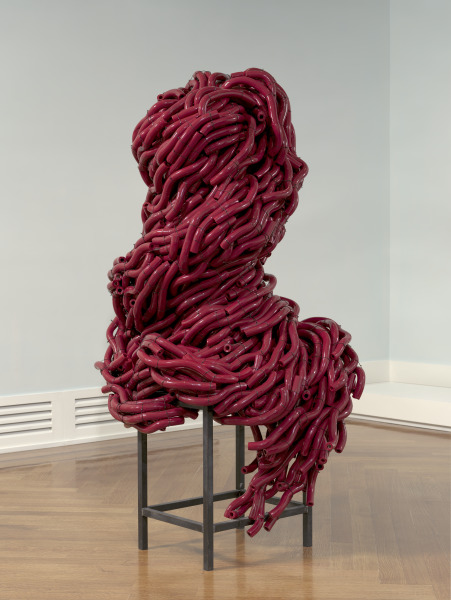
Red Rover, 2019, Annabeth Rosen (American, born 1957), fired and glazed ceramic wired with baling wire on a painted steel armature. Virginia Museum of Fine Arts, Arthur and Margaret Glasgow Endowment, 2021.140
Red Rover, Annabeth Rosen
Mid to Late 20th Century Art Galleries
Annabeth Rosen is formally trained in ceramics, yet heavily influenced by painterly gesture, Rosen expanded her practice to include conceptually driven sculptural forms early in her career. She has continually explored the temporal nature of the medium, melding a performative dimension into both material and process. Composed through laborious, additive processes, Rosen’s monumental sculptures push the medium beyond spectacle and into conversations about contemporary painting, feminist theory, endurance-based performance, and conceptual art.
Level 3
Vase, Kiichi Yamada, Grueby Faience Company
Decorative Arts Galleries
The Grueby Faience Company was one of the largest makers of distinctive Arts and Crafts pottery. Founder William Grueby developed the matte glazes in greens, yellows, blues, and ivory that revolutionized the look of American art pottery. George Prentiss Kendrick, who designed this vase and its decoration, oversaw most of Grueby’s early designs, which the company continued to produce over the years. Like other commercial manufacturers, Grueby standardized its forms: men were hired to construct the objects, and female art students decorated them according to company designs. This vase, similar to an example displayed at the 1900 World’s Fair in Paris and the 1904 Louisiana Purchase Exposition in St. Louis, is extraordinary for its size and the quality of glazing and decoration. It was executed by the Japanese artist Kiichi Yamada, who was active at Grueby from 1900 to 1902.
Vase Clermont, Charles-Louis-Emile Pihan, Eugenie Bethmont, Jean-Baptiste Gauvenet, Manufacture de Sevres
Decorative Arts Galleries
This rare vase, in the Art Deco style, is decorated with four panels of stylized nude figures within classical motifs. The striking blue, white, and gold surface decoration was conceived by Jean-Baptiste Gauvenet, a sculptor-modeler employed at Sèvres from 1908 to 1950. He created numerous forms of objects as well as ornamental decoration for ceramics. Gauvenet played a central role in the decoration, sculpture, and ornamentation of the Sèvres Manufactory Pavilion at the 1925 Exposition Internationale des Arts Décoratifs et Industriels Modernes in Paris, where this vase was on view.
This vase is an exceptional example of the collaboration between numerous artists during the late 19th century. The ceramic was made by Alphone Adolphe Lamarre (1837-1922) for the Charles Pillivuyt Porcelain Manufactory; the gilded bronze mounts, modeled by sculptor Louis Chalon and cast by Charles Louchet, include lily pads, a frog, and a fantasy creature with dragonfly wings most likely enameled by Eugène Feuillâtre.
The vase was displayed at the Salon of the Société Nationale des Beaux-Arts in Paris in 1898 and awarded a first prize. A similar example was on display at the International Exhibition of Modern Decorative Arts in Turin, Italy, in 1902.
Scene from the Ramayana (?)
South Asian Art Galleries
Terracotta panels, often illustrating stories from Indian mythology, were made to decorate Gupta-period brick temples throughout the Gangetic Valley. The scene shown on this damaged example is somewhat enigmatic but may be a scene from the great Hindu epic Ramayana. A large monkey (indicated by his tail) alights on a chariot, poised to strike its male occupant, whose back is turned to the viewer. Part of a shield emerges from inside the cart, as does the head of a second occupant, perhaps the vehicle’s charioteer or an abductee. The dynamic composition is remarkable, and several of its elements-including the startled horses-burst outside the panel’s frame.
Plaque Depicting a Male
South Asian Art Galleries
Made by baking clay that had been pressed into a prepared mold, terracotta plaques were produced in great numbers in India’s Ganges Valley during the Shunga period. How they were used is not clear, but many depicted standing female figures like the fragmentary example here. She wears a flamboyant headdress, large earrings, necklaces, and bracelets. Scarves are draped over her arms, and a lower garment with many folds is girded around her waist. Her left-hand rests on her hip, while the other holds some object at shoulder level.
These sculptures are badly worn. Originally, however, their surfaces would have been intricately detailed. Shunga-period sculptors worked in a highly descriptive and precise manner.
